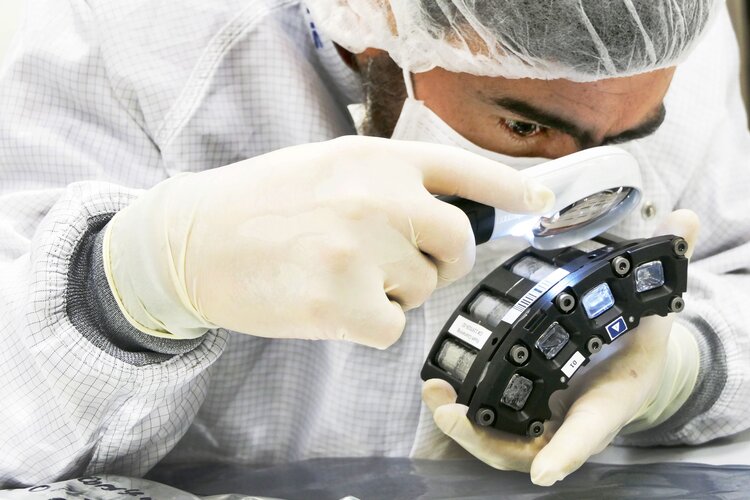
Image:
Another fluid experiment joins long running research on foam stability on the International Space Station. The Foam-Coarsening experiment, developed by Airbus for ESA, is scheduled to be activated this month in the Fluid Science Laboratory in the European Columbus module.
The foams come in self-contained cells, imaged above, and hold liquids that will be shaken (not stirred) and analysed with laser optics and high-resolution cameras. Researchers are keen to observe how foams behave in microgravity.
On Earth, the mixture of gas and liquid that makes up a foam quickly starts to change. Gravity pulls the liquid between the bubbles downwards, and the small bubbles shrink while the larger ones tend to grow at the expense of others. Due to drainage, coarsening (or enlarging) and rupture of the bubbles, a foam starts to collapse back to a liquid state.
But in space foams are more stable because there is no drainage in weightlessness. This allows scientists to study the slower phenomena of a bubble becoming bigger and bursting, which on Earth are masked by the drainage that destabilises the foam.
ESA astronaut Frank De Winne performed the Foam-Stability experiment in 2009 by shaking liquid solutions and recording what happened next. The samples ranged from pure water to protein-based fluids, like the ones used for chocolate foams, and antifoaming agents.
After just ten seconds, the fluids stabilised more quickly and produced more foam than on Earth. Scientists discovered that it was possible to create super-stable foams in zero gravity.
Building on this extensive foam research, Foam-Coarsening will investigate foam behaviour at different liquid stages, particularly as it transitions from a solid- to liquid-like state.
The results from this research will not just apply to the foam in your morning cappuccino. Foams are used in a wide range of areas from food production to cleaning and sealing products, cosmetics and personal hygiene products, and even construction.
NASA astronaut Jessica Meir installed the experiment in the Fluid Science Laboratory on 6 March after removing the Multiscale boiling experiment known as Rubi.
Click here for original story, Eye spy a foam
Source: ESA Space News